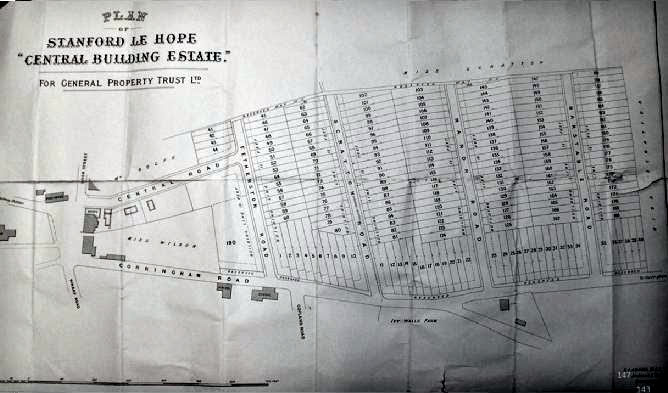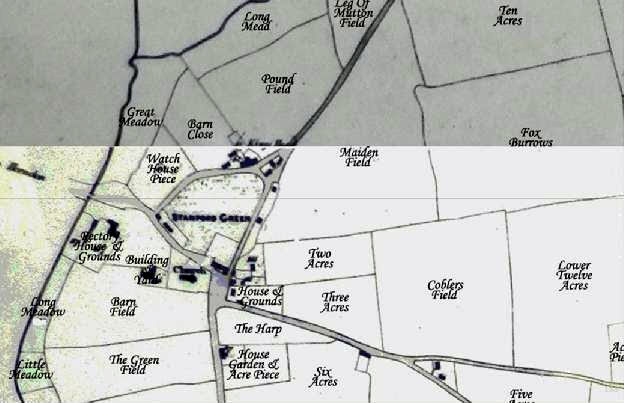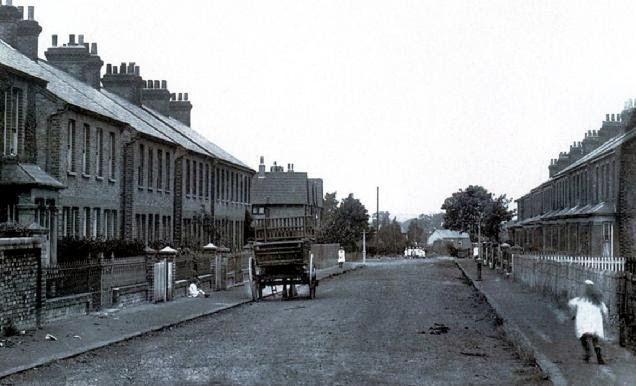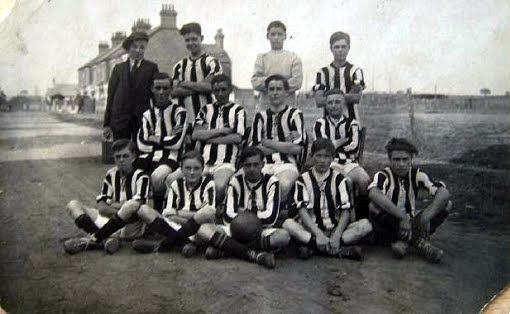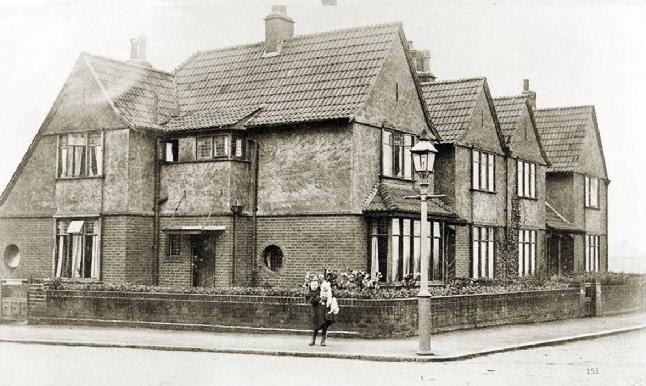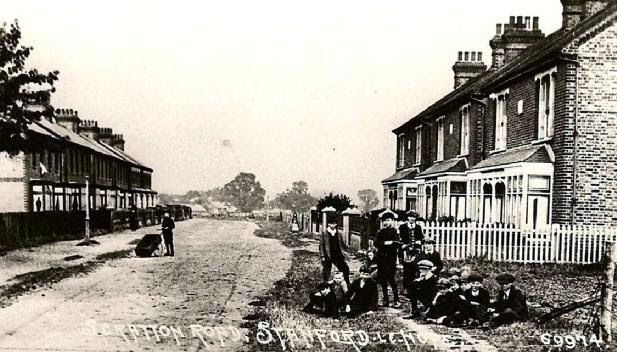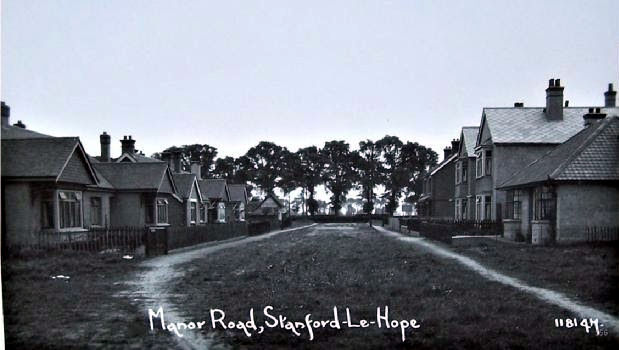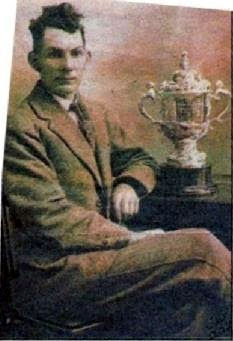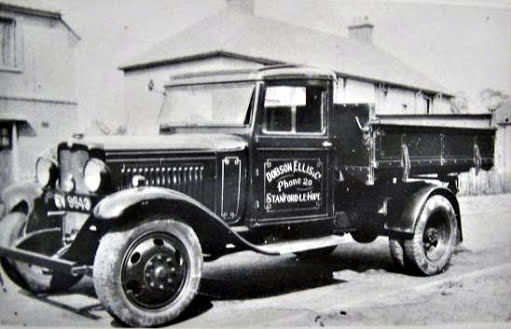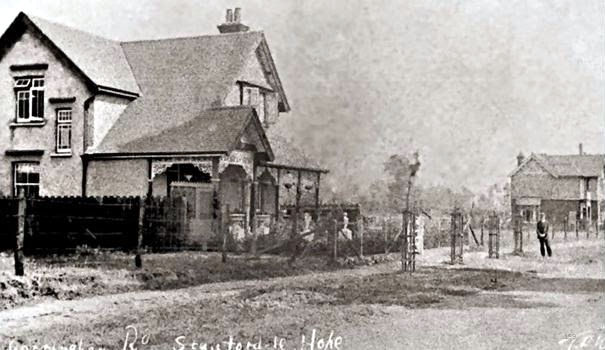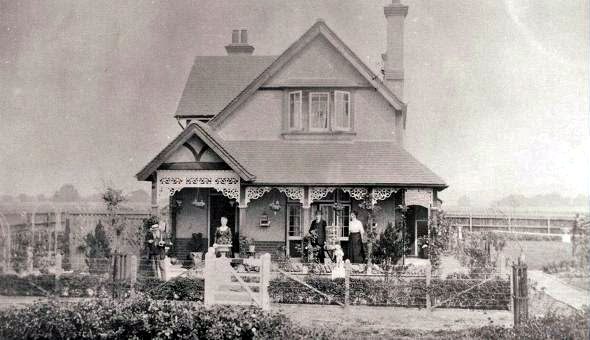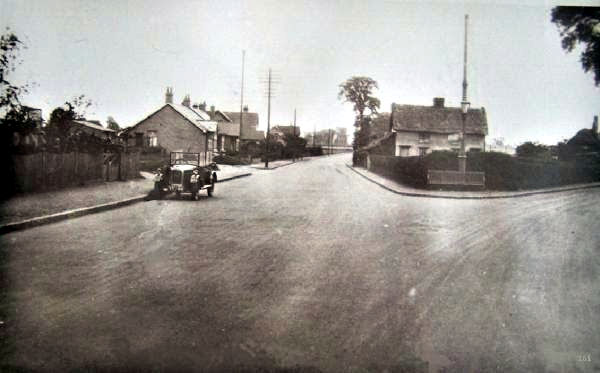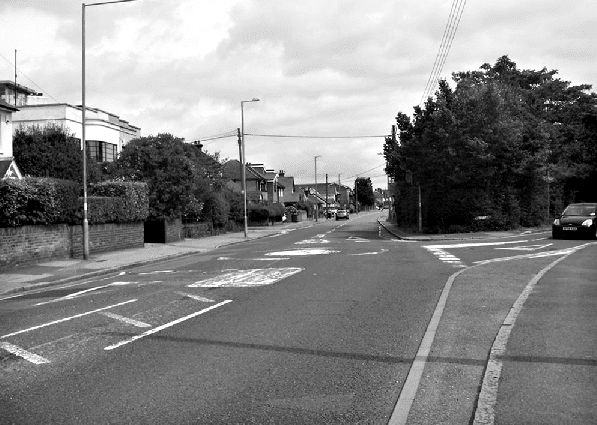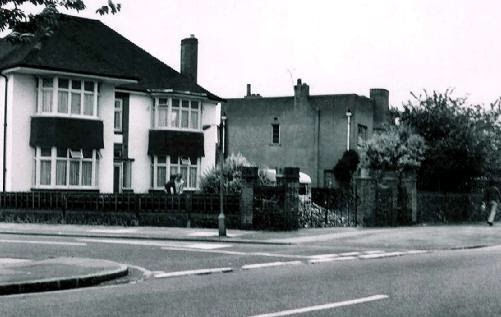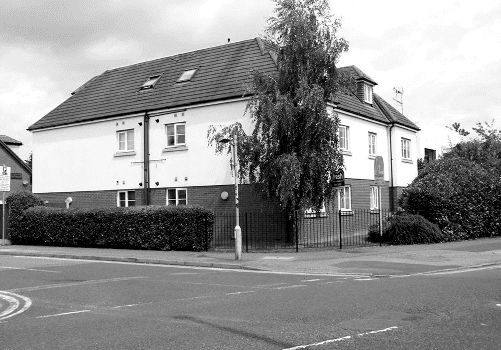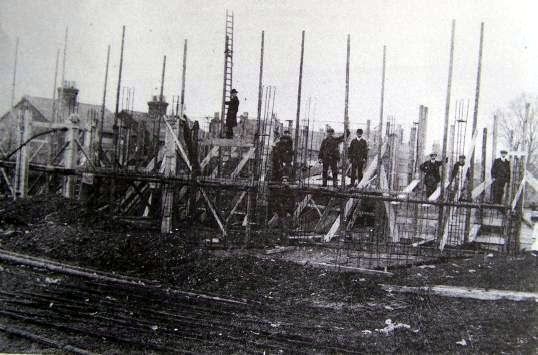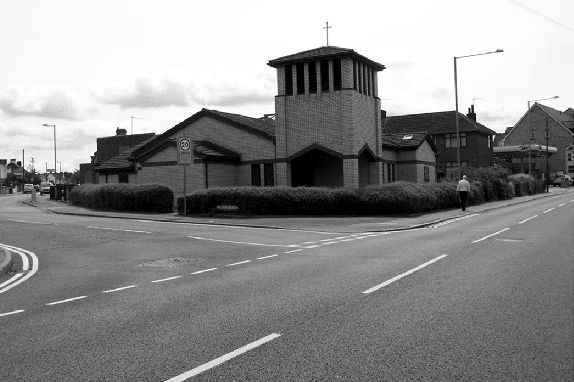The Central Building Estate
Another far smaller development was that of the General Property Trust’s Central Building Estate. In October 1896 Elizabeth Scratton sold via trustees an apportionment of the Hassingbrook Estate called Coblers Field to Ambrose Ellis, a prominent local businessman, chairman of Stanford Parish Council, a barge owner, at Stanford Wharf, contractor, and
‘hay and straw sales-man’ who lived at Ashton Villa, Southend Road and later at Stanford House also in Southend Road. Ambrose Ellis at the same time bought out the lease on Hassingbrook Farm held by Thomas Worrin Blyth. Coblers Field covered an area of 11 acres 2 roods and 25 perches.
A year later in November 1897 Ambrose Ellis sold the land to the General Property Trust Company of Pinners Court, Old Broad Street, City of London who bought it with a view to residential development. The General Property Trust had already purchased the fields known as Two Acres and Three Acres immediately to the west of Coblers Field and belonging to Ind & Smith Brewers and William Wilson’s estate respectively.
The General Property Trust designated this area ‘The Central Building Estate’ and planned five roads with names associated with the company and Hassingbrook Manor. These roads are Central Road, named for the Central Building Estate, Fetherston Road, Scratton Road, Manor Road, and Barstable Road named for the Barstable Hundred.
Development of the housing took place from the centre of the village outwards although Central Road, which for the first year or so of its existence was known as Chapel Road, was not designated for housing at the time.
Unlike Homesteads Ltd., the General Property Trust did not offer to build actual dwellings, rather they were land agents who planned the layout of the roads on the estate and divided the frontages to these roads into building plots which they offered for sale to builders and private individuals. Builders such as John Dobson and L.E. Brand bought several of these plots in Fetherston and Scratton Roads to erect semi-detached cottages as speculative ventures. Other building plots, particularly in Scratton; Manor; and Barstable Roads were sold mainly to private individuals who then commissioned local builders to erect houses on them.
The design of these houses had to meet standards laid down by the General Property Trust.
Fetherston Road; Scratton Road; Manor Road; and Barstable Road were laid out as culs-de-sac bounded on the south side by Corringham Road and on the north side by the later Dobson and Ellis sand and gravel pit. Building in Fetherston and Scratton roads commenced around 1900 and the original houses were mostly in place by the start of the First World War. The only other building constructed on the estate at the time was Little Beville situated in Corringham Road completed circa 1910 and occupied by Charles Messant, a ‘retired corn miller’ and his wife Judith.
As in the case of the Balstonia Estate, work was halted by the First World War and did not resume in Scratton; Manor; and Barstable Roads until around 1923. Even then development was piecemeal with the last of the houses not being constructed until around 1937.
As with many other roads in the area they were not adopted and made up by Thurrock Urban District Council until the late 1960s and remained unmade tracks. Residents were required to make a sizable contribution to the costs of the works according to the width of their frontage to the roads payable as an addition to the general rate over a period of years.
In the 1920s and 30s additional housing was built in Fetherston and Scratton roads along the lines of the pre-existing tracks to Southend Road. The Dobson and Ellis gravel pit which had been an unofficial playground for children was landscaped in the 1950s to form the playing field of Hassenbrook School.
As an aside, it may be noted that when the re-organisation and amalgamation of the various and separate councils making up the Orsett Union was undertaken in 1936, the leading contender for the name of the new Urban District Council was Graysbury. At the suggestion of the curator of the museum, the old Saxon name of Turroc, meaning the bottom of a boat where water collects, was modified to Thurrock and so Thurrock Urban District Council was formed. If the original proposal had stood, we could now be living in the Borough of Graysbury!
Mrs Clarkson lived with her family at Redholme which was and is the third from the left in the previous slide. Mrs Clarkson was the third daughter of Thomas Moss Shuttleworth and Harriet Shuttleworth nee Brown. The Shuttleworths of Gawthorpe Hall, Lancashire of whom Thomas was a descendant, were a very old aristocratic and philanthropic family who had provided many members of the clergy and legal profession. Mrs Clarkson’s sister Constance Ellen Shuttleworth who never married, lived in Manor Road.
A memoir written by Mrs Gladys May Hunwick nee Sullings written in the 1960’s described Mrs Clarkson, who had married Hugh Clarkson a stock exchange clerk in 1889 thus, “A well known church worker, a very devout lady and loved by everyone who knew her. My mother and she were friends for thirty years and I was so glad Mrs Clarkson was with us when my mother passed away suddenly.”
Manor Road was home to an Olympic Gold Medallist in the person of Mr. Enoch Jenkins. Mr Jenkins, who was born in south Wales in 1893, moved to Stanford in the 1920s and in 1928 married Florence Mahala Brooks who was born locally. Mr.Jenkins worked at the Shell Refinery and was a champion clay pigeon shot who won the medal at the now infamous 1936 games in Berlin.
This photograph dates from around 1912 and the residents at the time were Charles Messant aged 77 a retired corn miller and his wife Judith 56. Judith had a lady companion Alice Tolley 31 and it is possible that these are some of the people in the photograph.
Little Beville still stands in Corringham Road.
This impressive house was demolished in 2011 and replaced by flats. The miniature railway in the front garden was always a source of interest. The other house in the view is ‘Beaufort’ which still stands and was a billet for army officers during WW2. The house next to ‘Beaufort’ on the corner of Corringham Road and Manor Road, which like Beaufort was built in the Moderne style that was much in vogue in the early 1930s, was the home of George and Bill Boyce who built and ran the Regent Cinema in Corringham Road which opened on Monday 18th February 1935.
Many of the houses on this estate and elsewhere in the village were erected by local builders amongst whom were Griggs and Wilding of High Road Fobbing; L.E.Brand of Wharf Road; H.E Davisson; Dobson & Son London Road; J.M. Sullings of Copland Road and later Southend Road; R.E.Watts Southend Road; and C.Yates & Son Southend Road.
John Dobson as an example erected many houses and other buildings in the area between about 1905 when he moved to Stanford from Barling in Essex. The first house he built was for his own occupation and named St.Osyth, which according to local dialect, he may have pronounced Toosey!! The house still stands on the corner of Park Road and London Road.
He also built many of the houses in Caldwell Road and Scratton Road, the original St.Joseph’s Catholic Church, the former Stanford laundry in Poley Road, The Stanford Gas Works buildings, Thomas Allens repair shop in Victoria Road, Lathol House the residence of Nicolas Anfilogoff the refinery manager and leading Stanford citizen and his wife Christine Elise, and the concrete footing of the War Memorial. John Dobson remained a builder in the area until 1938 when he moved his business to Upminster.
The General Property Trust also acquired land from Little Butts farm to the west of the railway originally in the Parish of Horndon centred around Caldwell Road and Park Road and named this the Little Butts Estate.
